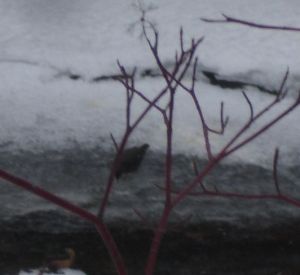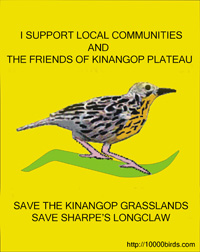As part of my MFA quest, I now find myself catching up on many classic works of nature literature that I had somehow skipped in my youth: John Muir’s account of the Water Ouzel, Rachel Carson’s seashore vignettes, Ralph Waldo Emerson. And, if you can believe it, Henry David Thoreau’s Walden (or at least selected portions thereof.)
Most of this has been illuminating in a good way, but occasionally I run across something that drives home how much times have changed. For instance, Thoreau talking about a “game” he played with a Common Loon:
…having looked in vain over the pond for a loon, suddenly one, sailing out from the shore toward the middle a few rods in front of me, set up his wild laugh and betrayed himself. I pursued with a paddle and he dived, but when he came up I was nearer than before. He dived again, but I miscalculated the direction he would take, and we were fifty rods apart when he came to the surface this time, for I had helped to widen the interval; and again he laughed long and loud, and with more reason than before. He manoeuvred so cunningly that I could not get within half a dozen rods of him. Each time, when he came to the surface, turning his head this way and that, he cooly surveyed the water and the land, and apparently chose his course so that he might come up where there was the widest expanse of water and at the greatest distance from the boat. It was surprising how quickly he made up his mind and put his resolve into execution. He led me at once to the widest part of the pond, and could not be driven from it. While he was thinking one thing in his brain, I was endeavoring to divine his thought in mine. It was a pretty game, played on the smooth surface of the pond, a man against a loon… So long-winded was he and so unweariable, that when he had swum farthest he would immediately plunge again, nevertheless… At length having come up fifty rods off, he uttered one of those prolonged howls, as if calling on the god of loons to aid him, and immediately there came a wind from the east and rippled the surface, and filled the whole air with misty rain, and I was impressed as if it were the prayer of the loon answered, and his god was angry with me; and so I left him disappearing far away on the tumultuous surface.
Never mind the god of loons — the ABA would certainly be angry at Thoreau, were he to behave like that today! But those were simpler, more self-centered days, especially for an educated white man with a place to live and time to spare; and moreover we did not have the data then that we do now to shed light on the weary business of migration and the toll taken on birds by such games. Still, it is a little jarring!
(On a completely unrelated note, could any reader recommend me a good field guide for the south Texas/ Rio Grande Valley region? I might have some spring break plans.)















